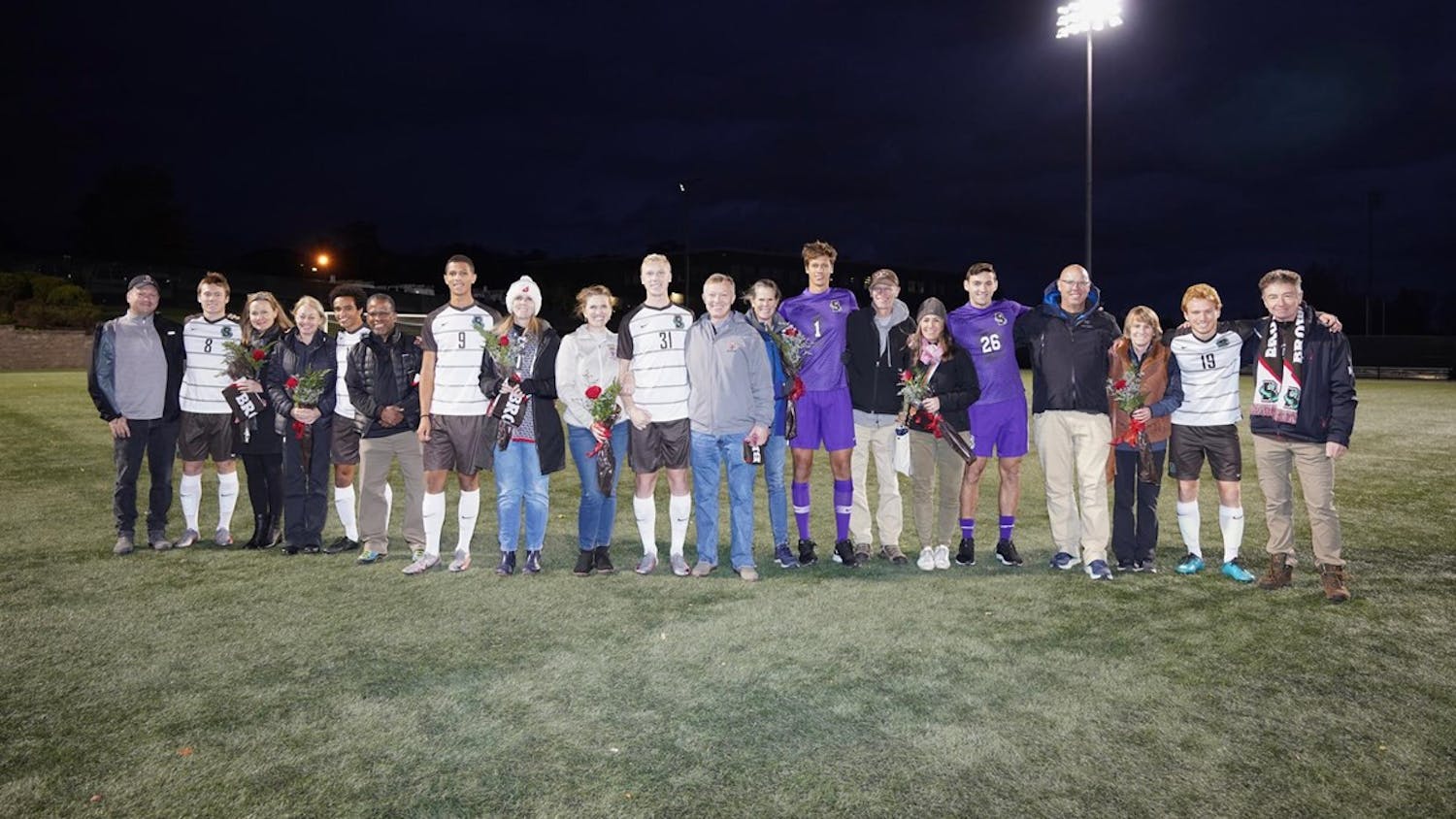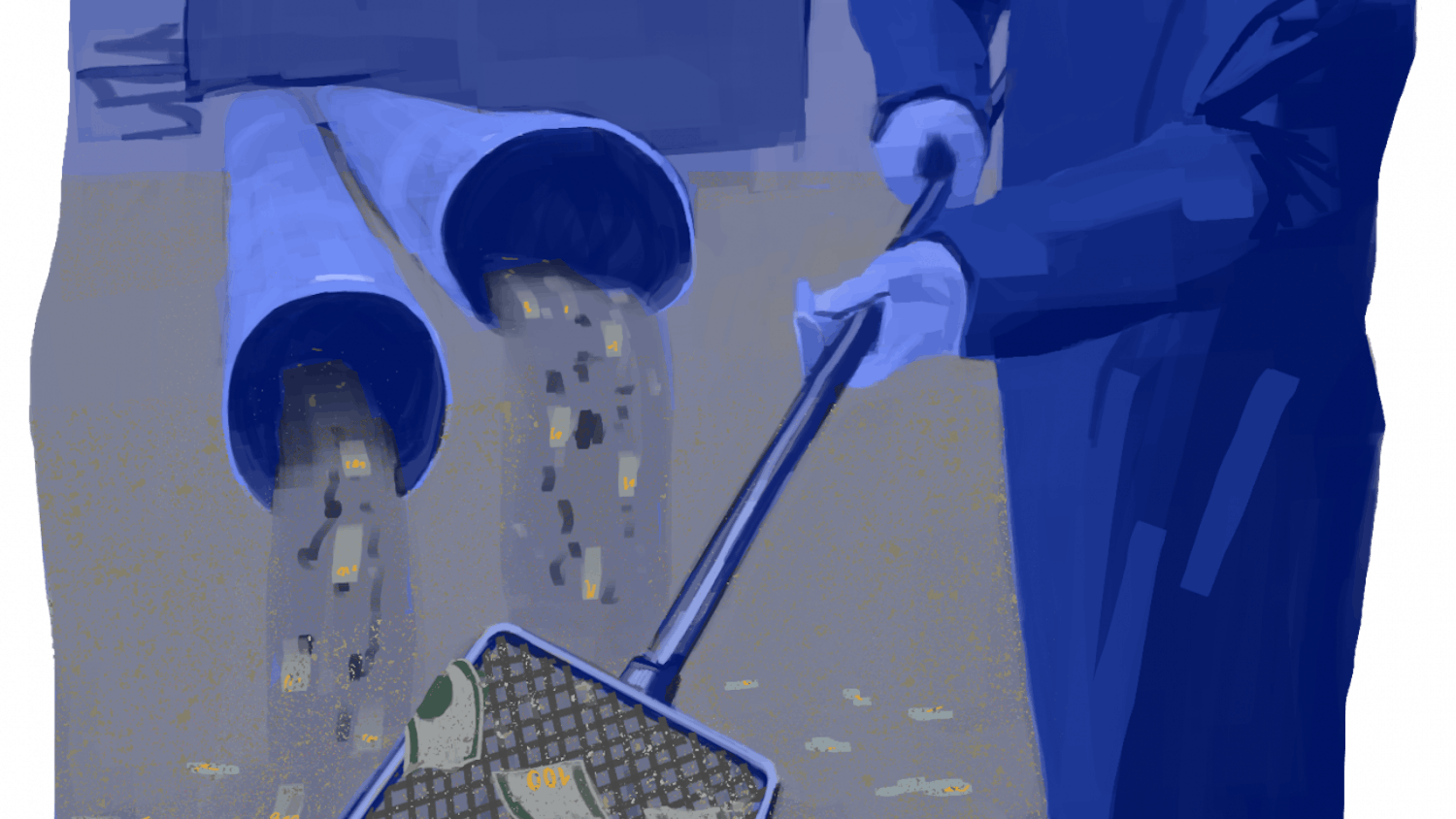Alums, professors and students flocked to "MCM@50: Theory, Practice, Passion" this weekend — though the event did not in fact celebrate the 50th anniversary of the Department of Modern Culture and Media. The two-day symposium comes during the 15th anniversary of the MCM department, but its predecessor, the semiotics program, was founded 36 years ago — the number 50 comes from a combination of the two dates and celebrating the semiotics program anniversary one year late.
"You might think that it is funny math or extreme math," said Mary Ann Doane, chair of the MCM department. "This event was very MCM."
The conference was characterized by alums' passion for the department and its professors, as well as self-aware humor from presenters and faculty.
Anna Fisher GS, a fourth-year doctoral student in MCM and one of the main organizers for the conference, said MCM@50 was developed to honor the program's founders, as well as expose undergraduate and graduate students to "all of the amazing things" alums of the program have accomplished.
In addition to three panels of distinguished alums, conference attendees participated in informal "unconferences," hour-and-a-half-long group discussion sessions with up to 20 participants.
"‘Unconferences' are the opposite of what you would think of as a stodgy event," Fisher said. The "unconferences" were not designed to be academic functions but rather a dialogue between attendees, she said.
Yasmeen Hoosenally '92 attended an "unconference" on the role of MCM in nonprofits and education. "There was a lively discussion that erupted around a set of people with completely different backgrounds," she said.
Big in media
The weekend's main attraction was the "Big Media" panel in the Martinos Auditorium in the Perry and Marty Granoff Center for the Creative Arts. The panel, moderated by MCM Professor Emeritus Michael Silverman, featured director Todd Haynes '85, "This American Life" radio host Ira Glass '82, NBC Universal Entertainment and Digital Network and Integrated Media chairwoman Lauren Zalaznick '84 and Michelle Higa '04, a member of the digital animation group Mixtape Club.
Higa, whose group works primarily on music videos and commercials, showed off her group's 2008 music video for Yeasayer's "Wait for the Summer," as well as a recent Batman-themed commercial for Google, which narrated Batman's story through search terms such as "flexible Kevlar" and "Gotham City Crime Statistics."
Zalaznick, who said she was not aware that each panelist was supposed to prepare a presentation, joked that she jotted down her talking points on the spot with pen and paper, despite spending much of her professional career giving PowerPoint presentations. "I work for the Man," Zalaznick said of her duties at NBC Universal, to which her friend and former work partner Haynes retorted, "I thought you were the Man."
Zalaznick, who produced several of Haynes' films, including 1991's "Poison," said she did not anticipate ending up in television. In her talk, she traced her professional career from her early work on movie sets to her current life as a television executive.
"I literally work at 30 Rock," she said of her office. "And it's literally just like (the sitcom) ‘30 Rock.'" Zalaznick joked that when speaking about her days at work, her kids ask her if she is talking about her real life or the episode from the night before.
"I'm obsessed with ‘Top Chef,'" Haynes said as he began his presentation, a reference to a reality show on the television network Bravo, which Zalaznick oversees. Haynes said he came to Brown wanting to create art and film and credited the semiotics department for grounding his ambitions in "a theoretical framework."
Haynes also spoke about his struggles coming out of graduation. His short film "Superstar: the Karen Carpenter Story," which depicts Carpenter's career and struggle with anorexia, used mixed media including animated Barbie dolls for the roles of Carpenter and her family. "No one wanted to show ‘Superstar' when I finished it," Haynes said.
Though Haynes enjoyed success with later feature films, he said he found it difficult to keep his fans happy when branching out into unfamiliar genres. His first film, "Poison," was embraced by gay audiences for its confrontation of the issues surrounding HIV . When Haynes switched gears in 1995 with "Safe," he said fans of his earlier work were perplexed by the film, which did not contain any explicitly gay themes. "When I showed it at gay film festivals, everyone said, ‘what the (expletive) is this?'"
Haynes also expressed concern about today's filmmaking. "The way we view media has changed, the alternative venues that existed and the things that propelled me have disappeared or vanished," he said. Haynes added he was surprised that, given the accessibility of filmmaking equipment today, even on devices like cell phones, more innovative work has not flourished.
Glass proved the most crowd-pleasing speaker at the panel, and the audience erupted in laughter multiple times during his presentation. Glass, who started his relationship with National Public Radio as a 19-year-old intern, said he had never heard of the program before he began working there.
"I still use what I learned at Brown every day at my job," Glass said. He said his study of Roland Barthes' proairetic code, which emphasizes sequences of actions and suspense to draw in audiences, influenced the structure of "This American Life" — "Exactly the opposite of what my professors intended for me to do with that information."
"It's hard making anything good," Glass said, recalling struggles early in his career. "Most things that you're making are trying to be crap. It wants to be bad."
"We all probably need a drink at this point," said Silverman, the moderator, after Glass' eccentric presentation.
The other(ed) alums reminisce
In addition to the Big Media panel, other alums had the opportunity to present their work and share humorous tributes to their concentration in panels titled "Artists and Producers" and "Academia After Academia."
At one panel, columnist and writer Ed Ball '82 joked that the original semiotics building "resembled a tenement of the East Village in New York." This was appropriate he said, because it "prepared graduates for the type of housing they would occupy" after school.
"I felt like I was being adopted into a cult," artist and scholar Coco Fusco '82 said. "We had a language, a protected space. We all wore black and smoked Export A cigarettes. Everyone said something controversial in their other classes to identify themselves as semiotics students."
"A lot of people worry about turning into their parents," said Alex Galloway '96, a computer programmer and associate professor at New York University. "I worry about turning into my old MCM professors." Galloway also joked about the department's tendency to produce "hyper-emo subjects" though it prides itself on "destroying the idea of interiority."
Despite the humorous tone, the speakers all shared an intense pride in the department. "There's something important about this lack of a signifier that people could identify us with," psychoanalyst Ona Nierenberg '80 said of the concentration. "It's not a ‘pre' to any already known profession. There's a call to invention."
Hoosenally mentioned MCM's difficulty as a seductive factor for many alums, who recalled nearly failing their first papers as the moment they "knew they wanted to do MCM."
"I would like if this happens again," conference attendee Madeleine Fix-Hansen '94 said. "It's nice to gather everyone together and think through things."

ADVERTISEMENT




